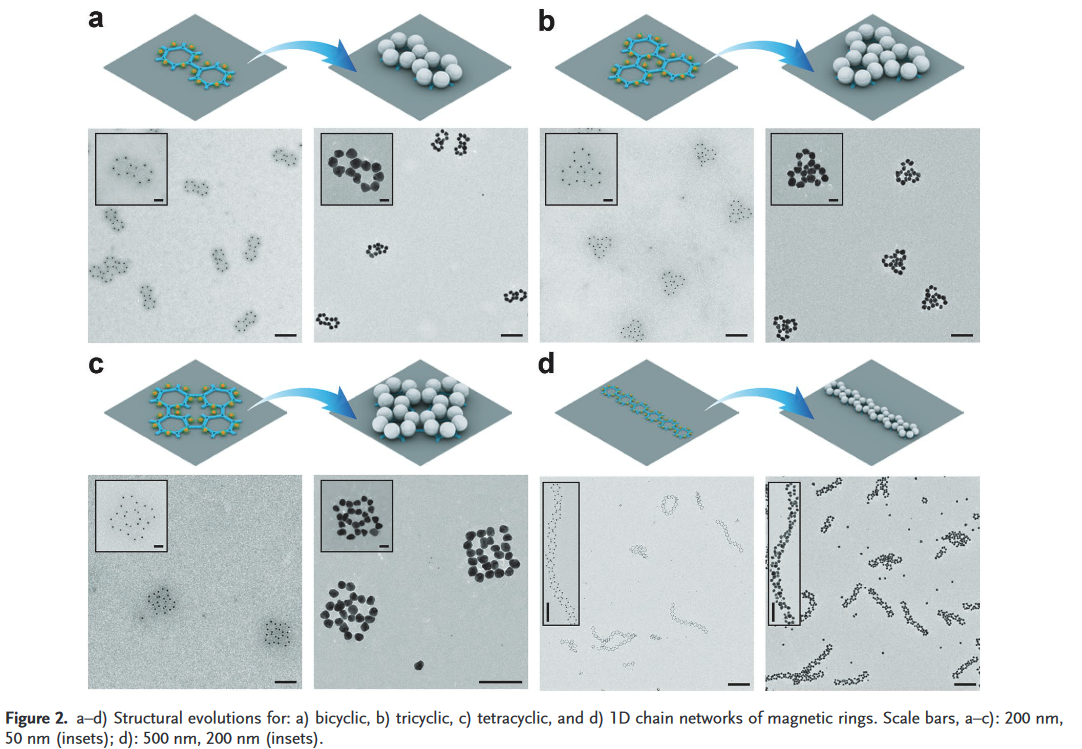Magnetic Plasmon Networks Programmed by Molecular Self-Assembly
This paper explores some of the potential uses of nano scale DNA facilitated self assembled systems. Rather than exploring the power and capabilities of these systems themselves, this paper demonstrates the construction of programmable magnetic nano materials with the assistance of DNA origami with a previously unknown level of precision. The authors show multiple ways of combining DNA origami templates and gold plasmonic nanoparticles into various base components, and some ways that those base components may further combine further into a higher level structure with programmable magnetic properties. This provides a potential avenue for real world applications of algorithmic self assembled systems.
Abstract
Nanoscale manipulation of magnetic fields has been a long-term pursuit in plasmonics and metamaterials, as it can enable a range of appealing optical properties, such as high-sensitivity circular dichroism, directional scattering, and low-refractive-index materials. Inspired by the natural magnetism of aromatic molecules, the cyclic ring cluster of plasmonic nanoparticles (NPs) has been suggested as a promising architecture with induced unnatural magnetism, especially at visible frequencies. However, it remains challenging to assemble plasmonic NPs into complex networks exhibiting strong visible magnetism. Here, a DNA-origami-based strategy is introduced to realize molecular self-assembly of NPs forming complex magnetic architectures, exhibiting emergent properties including anti-ferromagnetism, purely magnetic-based Fano resonances, and magnetic surface plasmon polaritons. The basic building block, a gold NP (AuNP) ring consisting of six AuNP seeds, is arranged on a DNA origami frame with nanometer precision. The subsequent hierarchical assembly of the AuNP rings leads to the formation of higher-order networks of clusters and polymeric chains. Strong emergent plasmonic properties are induced by in situ growth of silver upon the AuNP seeds. This work may facilitate the development of a tunable and scalable DNA-based strategy for the assembly of optical magnetic circuitry, as well as plasmonic metamaterials with high fidelity.[1]
References
- ↑
Wang, Pengfei, Huh, Ji-Hyeok, Lee, Jaewon, Kim, Kwangjin, Park, Kyung Jin, Lee, Seungwoo, Ke, Yonggang - Magnetic Plasmon Networks Programmed by Molecular Self-Assembly
